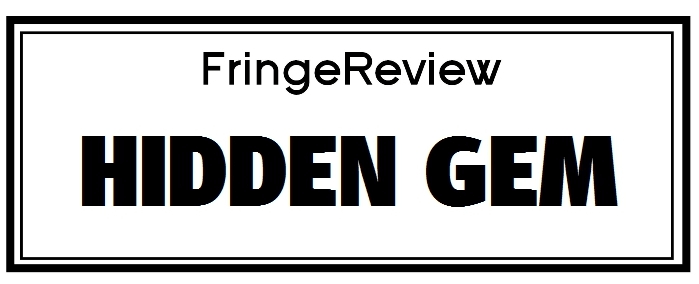Brighton Year-Round 2024
St Nicholas Simon Carrey Fauré and Chaminade Recital
Simon Carrey

Genre: Live Music, Music
Venue: St Nicholas Church, Dyke Road, Brighton
Festival: Brighton Year-Round
Low Down
Simon Carrey is an exquisite and deeply-musical pianist, wholly in tune with Gabriel Fauré. I’d love to have heard two hours of him, with an interval. He plays Fauré – Nocturnes 1 and 4 and three song transcriptions. And three substantial pieces by Cécile Chaminade.
Review
The refractively beautiful and gorgeous exuberance meet in two French contemporaries. French and British-trained pianist Simon Carrey gave an exquisite Gabriel Fauré and Cécile Chaminade recital at St Nicholas Church, Dyke Road, Brighton.
Fauré (1845-1924) the centenary of whose death falls this year, is the locus of this recital, with two genres: two of his 13 Nocturnes, and three songs transcribed by Carrey himself.
Chaminade (1858-1944), whose works are becoming far better-known, is represented by three pieces, two not her best-known perhaps, but not obscure. Her durability and scintillating brilliance are re-emerging, now she’s finally been acknowledged.
First was Fauré’s early Nocturne No, 1 in E flat minor Op 33/1 (1875). Set in a remote key, it also foreshadows his alter Nocturnes rather than the bright-toned ones that so often follow. It’s a ruminative refractive piece, curling in on itself with a refrain growling from the bass, almost like a song. But its textures are miraculously held with ascending slow arpeggios the glissandi.
It was so rapt people didn’t dare clap, and the songs, all arranged by Carrey followed at intervals. ‘Les Berceaux’ Op 32/1 from 1879 a song setting a poem by Sully Prudhomme based around seafarers and their wives and widows. ‘Men must work, and women must weep’, a melancholic still song-like utterance.
‘Au bord de l’eau’ Op 8/1 (another Sully Prudhomme poem, set hot off the press) is a dark very early opus piece but from 1875, worthy of the Nocturnes, though it’s about two lovers next to the sea, absorbed in each other. Carrey’s realisation of it – with the song in the right hand and the accompaniment in the left, is a marvel of compression. And raises it to a Nocturne No. 0 almost, though it’s relatively brief. As pianist Graham Johnson wrote of the original in his Hyperion CD notes for the Mélodies: “it launches itself with an upward leap followed by a spiralling descent of ingratiating melody rich in harmonic implications.”
Finally ‘Apres un reve’ Op 7/1 from 1878 was transcribed for cello and piano by Fauré himself. Its an unforgettable melody, though the forgettable poet Romain Bussine gifted this awaken from a dream of love that trend him a small immortal life (he’s known to French readers)
Fauré’s early-middle-period Nocturne No, 4 in E flat major Op 36 (1884) is like a mirror of No. 1, the major of that work’s minor key, and radiant ins elf-knowledge Its song-like quality, not always a feature of the Nocturnes, harks back through Chopin to the Nocturne’s originator, John Field (1782-1837). It’s one of the most famous, and rightly so: it’s untroubled, almost as some of the contemporary barcarolles were, but with ana arc of song-like crystalline beauty that seems bell-like in its cantabile rise and fall.
Chaminade’s Theme Varié in A, Op 89 from 1898 is a short set of variations brilliantly decorated. You can see straight away Chaminade is a virtuoso, and this demanded much hand-crossing, not so present in Faure´. Chaminade was extrovert in style, but sensitive as each of these glittering but not glacial variations show. Her greatest works are even more than this. It’s like watching a cut-glass bowl from the Second Empire slowly revolve, catching different lights.
Her ‘Les Sylvains’ (‘The Fauns’) Op 60 from 1892 presents two contrasting ideas, gently lyrical with a pulsating accompaniment and the other plying in high registers. It’s a gambolling piece of two fauns perhaps, but in slow motion. And elusive melodically. Fascinating.
Chaminade’s single Nocturne Op 165 from as late as 1924, the date of Fauré’s death. It’s a reflective piece with a song-like core relating it closely to Fauré’s Nocturne No. 4 which it follows in the recital though after nearly half a century in composition. It’s worth hearing again, to unpack its subtleties and indeed clarity – something Chaminade always possessed, though here with regret at fading fashion and incipient neglect. Not to plug recordings but Hyperion cover both composers.
Carrey is an exquisite and deeply-musical pianist, wholly in tune with Fauré. I’d love to have heard two hours of him, with an interval.


















































